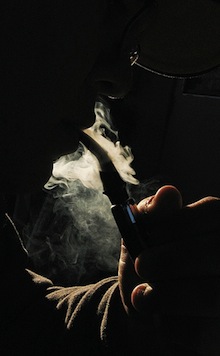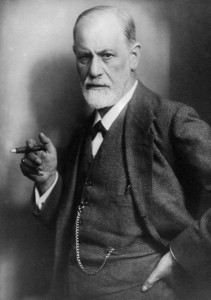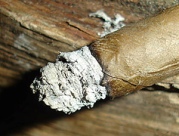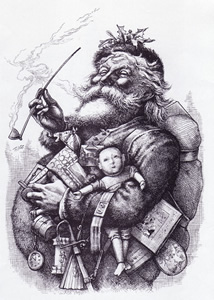Stogie Commentary: International Pipe Smoking Day
17 Feb 2011
This Sunday is International Pipe Smoking Day, a day for celebrating the tradition of pipe smoking. If you haven’t tried a pipe, it’s a good time to see if you like it.
 Unlike the love-hate relationship between cigar and cigarette smokers, pipe smokers are natural friends of cigar smokers, and not just because we frequent the same shops. Remember that the IPCPR, after all, represents both cigar and pipe retailers.
Unlike the love-hate relationship between cigar and cigarette smokers, pipe smokers are natural friends of cigar smokers, and not just because we frequent the same shops. Remember that the IPCPR, after all, represents both cigar and pipe retailers.
Like cigar smokers, and unlike cigarette smokers, pipes are a hobby, not a habit or an addiction. A pipe, like a cigar, is a great way to slow down the hectic pace of life and reflect on the past, present, and future.
Pipe smokers are often also similarly discriminated against, even among smokers. I’ve seen signs that read “No Cigars or Pipes” too many times to remember.
Personally, I’ve tried a pipe on a few occasions, and while I enjoyed it, ultimately it wasn’t for me. I can see the appeal, but the idea of constantly cleaning a pipe seems like a bit too much for me. I’ve also never smoked a pipe that has the complexity of a fine cigar. (But then, I’m an amateur when it comes to pipes.)
So don’t take my word for it. Many cigar smokers regularly enjoy pipes too. And with International Pipe Smoking Day on Sunday, what better time to give it a try?
photo credit: Flickr

 That’s a fair question, and one that I often ask myself. After all, cigars cost money, and buying one stick usually means less left over to spend on others. And yet, in my reviews, you won’t find the answer to that question. It’s not that it doesn’t occur to me; it’s just that I don’t think my personal answer would (or should) be helpful to readers.
That’s a fair question, and one that I often ask myself. After all, cigars cost money, and buying one stick usually means less left over to spend on others. And yet, in my reviews, you won’t find the answer to that question. It’s not that it doesn’t occur to me; it’s just that I don’t think my personal answer would (or should) be helpful to readers. These conditions can induce feelings of confusion and indecision, create overcrowded humidors, and limit smoking enjoyment. Perhaps you, or someone you know, is afflicted by one or both of these and may not even be aware of it. But don’t despair. There is hope. These infirmities can be cured.
These conditions can induce feelings of confusion and indecision, create overcrowded humidors, and limit smoking enjoyment. Perhaps you, or someone you know, is afflicted by one or both of these and may not even be aware of it. But don’t despair. There is hope. These infirmities can be cured. The pre-light aroma was enticing and, when lit, the Nine produced lots of smoke and the six-inch stick burned slowly. From what I’d heard and read, I anticipated a ligero-powered, Nicaraguan sizzler.
The pre-light aroma was enticing and, when lit, the Nine produced lots of smoke and the six-inch stick burned slowly. From what I’d heard and read, I anticipated a ligero-powered, Nicaraguan sizzler. Limited edition smokes can be frustrating. They’re often hard to get and, if you don’t move quickly, you may not be able to buy any, meaning you may have to make a decision before you really know all the details about the smoke. Still, there’s a refreshing bit of honesty in limited edition cigars. Many cigar makers, particularly those who don’t grow their own tobacco, have only enough tobacco to make a small run without sacrificing quality and consistency. So limited releases can be some of the best (if rare) cigars available. For that reason, I welcome more limited cigars, as long as they’re limited for a good reason and not just a marketing gimmick.
Limited edition smokes can be frustrating. They’re often hard to get and, if you don’t move quickly, you may not be able to buy any, meaning you may have to make a decision before you really know all the details about the smoke. Still, there’s a refreshing bit of honesty in limited edition cigars. Many cigar makers, particularly those who don’t grow their own tobacco, have only enough tobacco to make a small run without sacrificing quality and consistency. So limited releases can be some of the best (if rare) cigars available. For that reason, I welcome more limited cigars, as long as they’re limited for a good reason and not just a marketing gimmick. For the holidays,
For the holidays,  Santa Smokes
Santa Smokes Patrick Ashby
Co-Founder & Editor in Chief
Patrick Ashby
Co-Founder & Editor in Chief Patrick Semmens
Co-Founder & Publisher
Patrick Semmens
Co-Founder & Publisher George Edmonson
Tampa Bureau Chief
George Edmonson
Tampa Bureau Chief